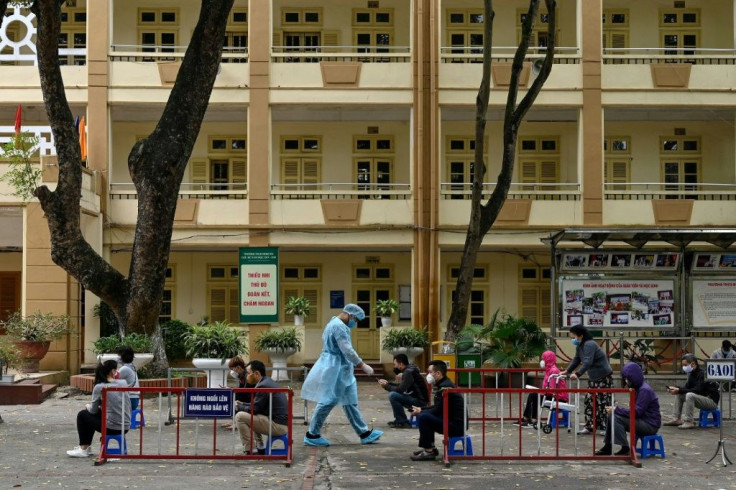Beijing Sends Survey Ship To South China Sea As Region Battles Coronavirus

KEY POINTS
- The Chinese survey vessel, the Haiyang Dizhi 8, appeared well within the EEZ of Vietnam about 160 km (100 miles) offshore.
- It was accompanied by at least one Chinese Coast Guard (CCG) boat.
- The Haiyang Dizhi 8 is used to conduct seismic surveys in offshore waters presumably searching for gas and oil reserves.
The news of a Chinese survey ship in the South China Sea encroaching on the exclusive economic zones (EEZs) of neighboring countries is not surprising. What is alarming is that they choose to do this during a global pandemic caused by the SARS-CoV-2 virus, the novel coronavirus that originated in Wuhan, China.
Dr. Ha Hoang Hop, visiting Senior Fellow at the Singapore-based research center Iseas-Yusof Ishak Institute voiced his opinion and said, "The deployment of the vessel is Beijing's move to once again baselessly assert its sovereignty in the South China Sea. China is using the coronavirus distraction to increase its assertiveness in the South China Sea, at a time when the US and Europe are struggling to cope with the new coronavirus."
This is not the first time this vessel was seen in the region; it was involved in a stand-off with Vietnamese vessels last year. The Chinese survey vessel, the Haiyang Dizhi 8, re-appeared Tuesday (April 14) well within the EEZ of Vietnam about 160 km (100 miles) offshore. It was accompanied by at least one Chinese Coast Guard (CCG) boat, according to Marine Traffic, a website that tracks movements of ships in the area.
Last year Vietnam committed much of its naval resources to keeping a close eye on the intruders. The Haiyang Dizhi 8 is used to conduct seismic surveys in offshore waters presumably searching for gas and oil reserves. The underwater wealth has turned a commercial fishing zone into a global “hot-spot” with the overlapping claims of sovereignty between Vietnam and China.
Tuesday’s appearance follows the sinking of a Vietnamese fishing boat by China on April 2. The incident drew a protest from Vietnam who accused China of violating its sovereignty and threatening the lives of its fishermen.
The United States regularly runs freedom of navigation routes in the South China Sea. The U.S. State Department said in a statement, “We call on the PRC (People’s Republic of China) to remain focused on supporting international efforts to combat the global pandemic, and to stop exploiting the distraction or vulnerability of other states to expand its unlawful claims in the South China Sea.”
China’s Global Times, the official state-run daily newspaper of China’s ruling Communist Party published a response to April 2 incident claiming Vietnam was using the fishing boat sinking to distract from its “ineptitude” in handling the coronavirus.
This seems a bit odd as Vietnam, with a population of nearly 100 million people has been successful in staving off the pandemic by mass quarantine and an aggressive contact-tracing and testing strategy. Vietnam has recorded only 267 cases of COVID-19 with zero deaths. Nearly 122,000 coronavirus tests have been carried out in Vietnam.
It is much more likely China will benefit from any “distraction” over its issues as the origin of COVID-19. Vietnam should be praised in its efforts to slow the pandemic, assuming the statistics are accurate.

© Copyright IBTimes 2024. All rights reserved.











